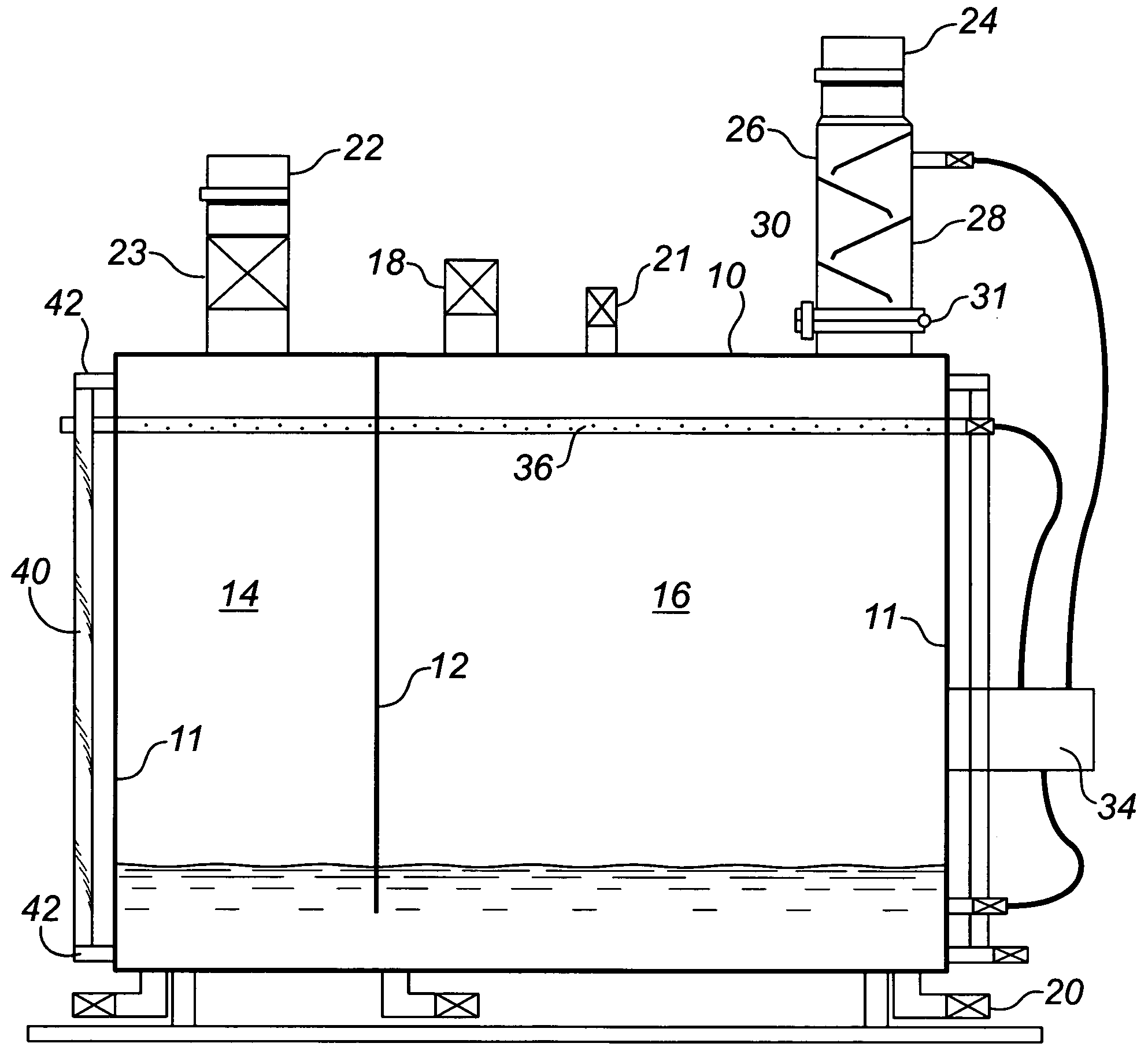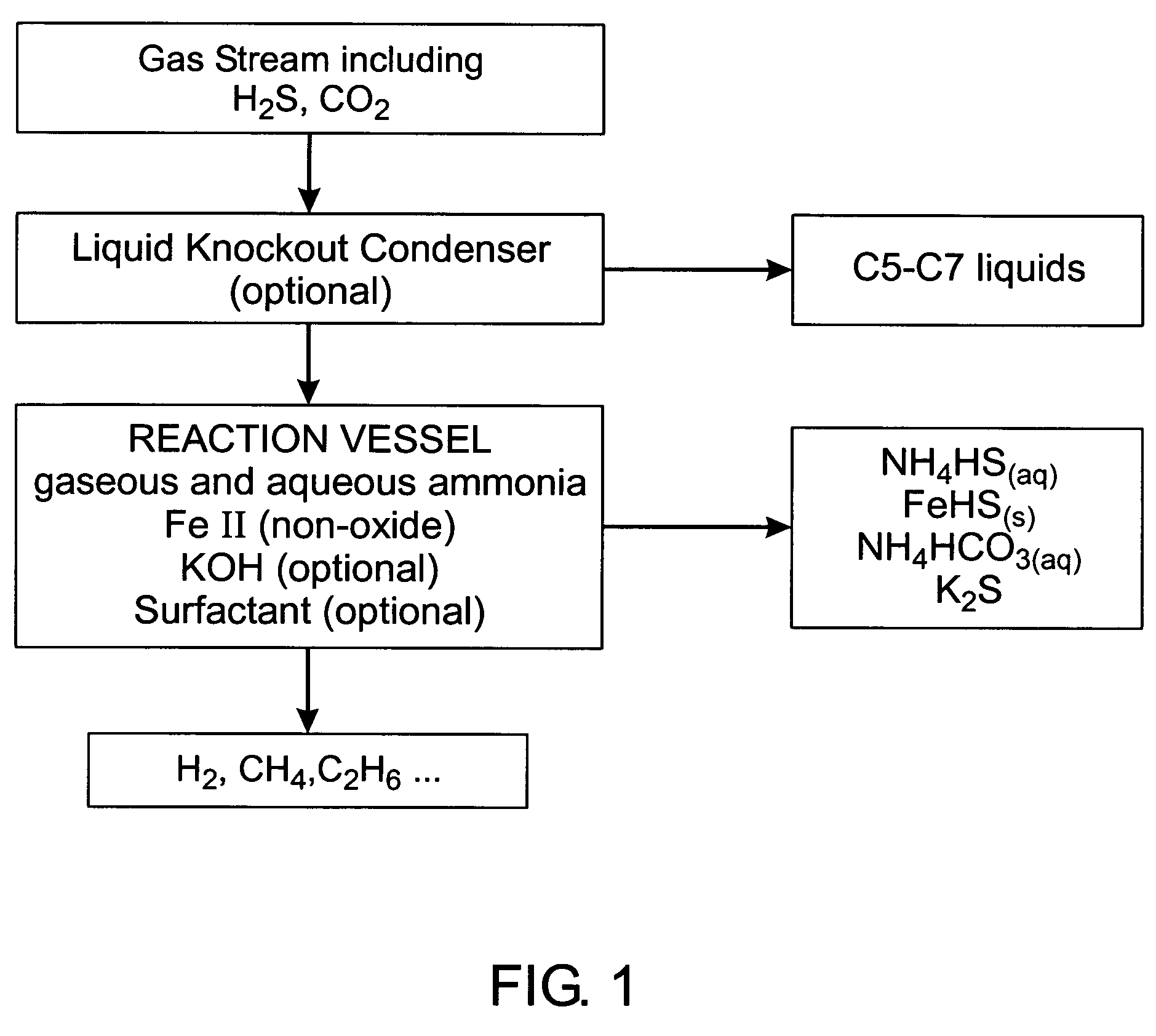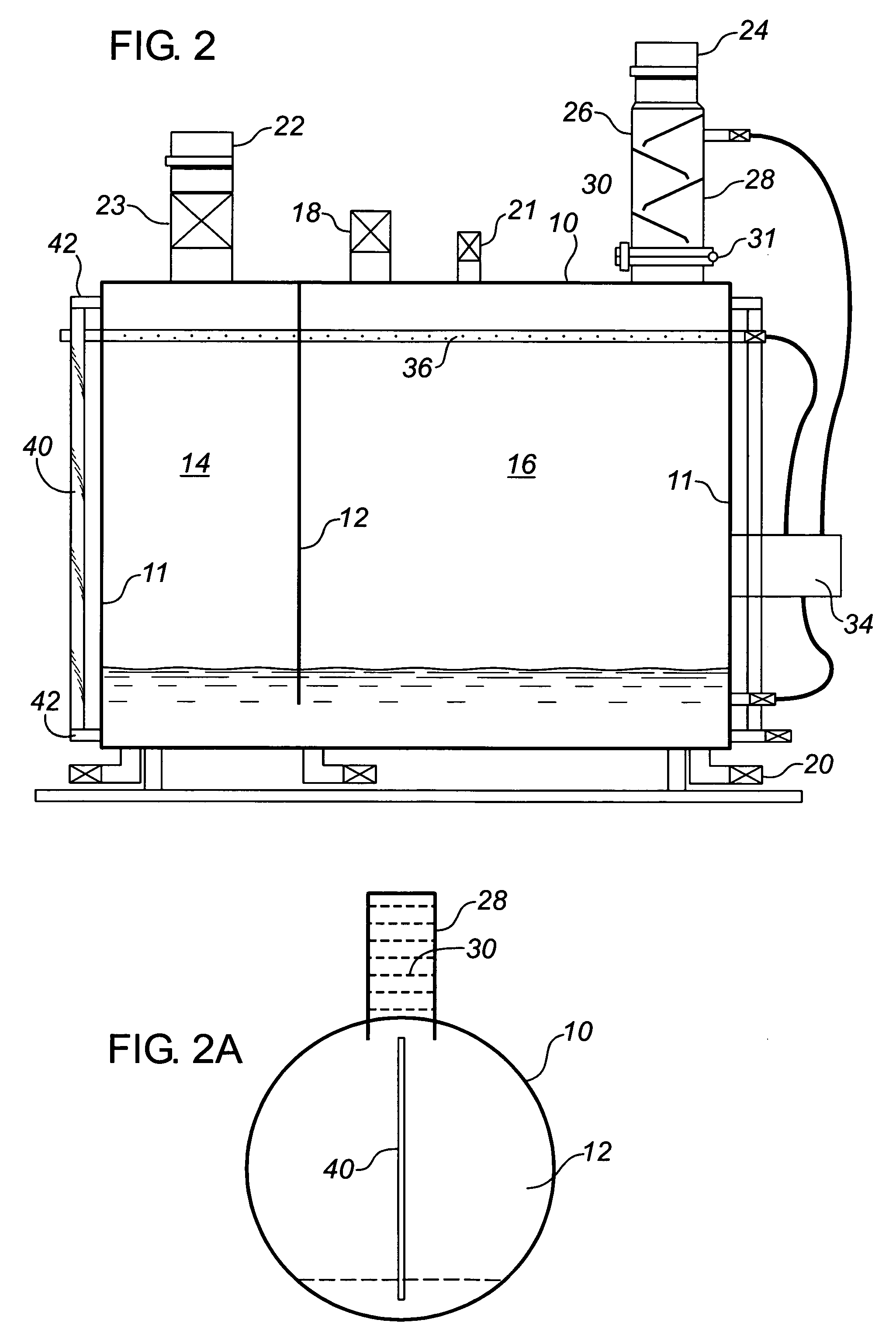Method and apparatus for hydrogen sulphide removal
a hydrogen sulphide and hydrogen sulphide technology, applied in the direction of combination devices, combustion processes, combustion treatment, etc., can solve the problems of partial combustion, oxygen from the air is less able to react with the hydrocarbons from the gas stream, and the gaseous gas in crude petroleum, etc., to achieve the effect of acid gas removal, efficiently and effectively
- Summary
- Abstract
- Description
- Claims
- Application Information
AI Technical Summary
Benefits of technology
Problems solved by technology
Method used
Image
Examples
example 1
[0069]A horizontally cylindrical vessel formed of 36,000 psi uncoated low carbon steel was provided, substantially as illustrated in FIG. 2. A 60 liter charge of a 26 BE ammonia solution including 0.2% surfactant and 1.75% potassium hydroxide (v:v concentrated KOH) was connected to the gas effluent from a crude oil storage tank. The incoming gas pressure was approximately 1 to 3 ounces above atmospheric pressure. A small pump powered by natural gas was used to re-circulate the liquid phase through both a spray bar and to the top of the baffle tower as described above. The incoming gas was tested using a laboratory gas chromatograph showing the gas concentrations shown in Table 1 below. The effluent from the gas outlet was tested both with a field Gas Tec™ unit and with a laboratory gas chromatograph. As is apparent, the hydrogen sulphide concentration was reduced to a negligible level and carbon dioxide reduced to undetectable level.
[0070]
TABLE 1ChromatographicGas Tec ™Chromatograph...
example 2
[0072]Under conditions similar to that in the above example, except that no fluid re-circulation system was provided, the following gas concentrations as shown in Table 2 were recorded before and after treatment in the vessel
[0073]
TABLE 2ChromatographicGas Tec ™ChromatographicGasGasGasConcentrationConcentrationConcentrations;BeforeAfterOutput fromREACTORScrubbingREACTORGASES(PPM)(PPM)(PPM)Hydrogen110,10000SulphideCarbon Dioxide121,30000Hydrogen0n / a4,400
[0074]After desiccation of the liquid phase, it was found to include ammonium bisulphide, ammonium sulphide, iron II sulphide, and ammonium bicarbonate, all in solid crystalline form.
PUM
| Property | Measurement | Unit |
|---|---|---|
| temperatures | aaaaa | aaaaa |
| diameter | aaaaa | aaaaa |
| diameter | aaaaa | aaaaa |
Abstract
Description
Claims
Application Information
 Login to View More
Login to View More - R&D
- Intellectual Property
- Life Sciences
- Materials
- Tech Scout
- Unparalleled Data Quality
- Higher Quality Content
- 60% Fewer Hallucinations
Browse by: Latest US Patents, China's latest patents, Technical Efficacy Thesaurus, Application Domain, Technology Topic, Popular Technical Reports.
© 2025 PatSnap. All rights reserved.Legal|Privacy policy|Modern Slavery Act Transparency Statement|Sitemap|About US| Contact US: help@patsnap.com



